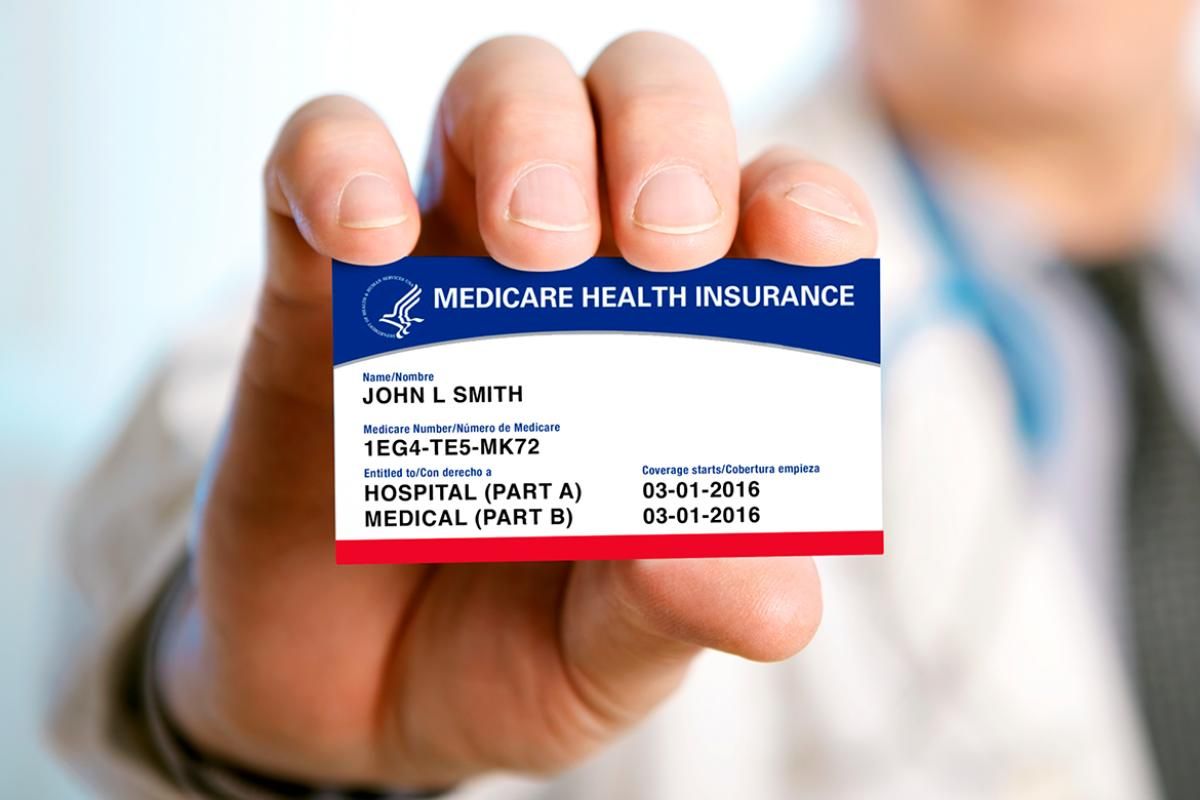Original Medicare
Original Medicare is a federal health insurance program in the United States that provides coverage for individuals who are 65 years old or older, as well as certain younger individuals with disabilities and those with end-stage renal disease (ESRD). It consists of two main parts: Medicare Part A and Medicare Part B. Medicare Part A, also known as hospital insurance, covers inpatient hospital stays, skilled nursing facility care, hospice care, and some home health care services. Most people do not have to pay a premium for Part A if they or their spouse paid Medicare taxes while working. However, there are deductibles, coinsurance, and copayments associated with Part A services. Medicare Part B, also known as medical insurance, covers medically necessary services and supplies, including doctor visits, outpatient care, preventive services, and durable medical equipment. Part B requires a monthly premium, which is typically deducted from the individual's Social Security benefits. There are also deductibles, coinsurance, and copayments associated with Part B services. While Original Medicare provides coverage for a wide range of healthcare services, it does not cover all expenses. There are gaps in coverage, such as prescription drugs, routine dental and vision care, and long-term care. To help fill these gaps, individuals can choose to enroll in additional coverage, such as Medicare Part D prescription drug plans or Medicare Supplement Insurance (Medigap) plans. It's important to note that Original Medicare is administered by the federal government, and individuals have the freedom to choose their healthcare providers as long as they accept Medicare. However, it's advisable to check with providers to ensure they accept Medicare assignment, which means they agree to accept the Medicare-approved amount as full payment for covered services.


Some of the cost-sharing associated with the Original Medicare
Deductible
Part A Deductible:
Part A covers hospital services, including inpatient care, skilled nursing facility care (under certain conditions), hospice care, and some home health care. The Part A deductible refers to the amount that beneficiaries must pay out of their own pocket before Medicare starts covering the costs. This deductible is applied per "benefit period," which begins when a beneficiary is admitted to the hospital or a skilled nursing facility. The benefit period ends when the beneficiary has not received any inpatient hospital or skilled nursing care for 60 consecutive days.
Part B Deductible:
Part B covers medical services such as doctor visits, outpatient care, preventive services, and durable medical equipment. The Part B deductible is the amount that beneficiaries must pay before Medicare starts paying its share for these services. Unlike the Part A deductible, which is applied per benefit period, the Part B deductible is an annual deductible.
Coinsurance
Coinsurance is another important aspect of Original Medicare coverage. In addition to deductibles, beneficiaries may also encounter coinsurance costs when they receive medical services under Part A and Part B.
Part A Coinsurance:
Under Part A, beneficiaries are responsible for paying coinsurance for certain types of inpatient care. Once the Part A deductible (if applicable) has been met for a benefit period, Medicare pays 80% of the approved amount for covered services, and the beneficiary is responsible for the remaining 20% coinsurance amount.
Part B Coinsurance:
Part B of Original Medicare covers outpatient medical services, and beneficiaries are generally required to pay a coinsurance amount for these services. After the Part B deductible has been met (if applicable), Medicare typically covers 80% of the approved amount for covered services, and the beneficiary is responsible for the remaining 20% coinsurance.
Copay
Copay (or copayment) is another important aspect of Medicare coverage. It is a fixed amount that beneficiaries are required to pay for certain medical services and supplies covered by Medicare.
Part A Copay:
For Part A, beneficiaries may have to pay copayments for certain types of care received in an inpatient setting, such as a hospital or skilled nursing facility. As mentioned earlier, Part A has a deductible, and once that deductible is met, copayments may apply after a certain number of days in the hospital.
Part B Copay:
Under Part B, beneficiaries may have copayments for various outpatient services, including doctor visits, durable medical equipment, and other medical supplies.
What are the different types of Medicare enrollment periods ?
-
1. Initial Enrollment Period (IEP)
The Medicare Initial Election Period (IEP) is a seven-month window that begins three months before an individual turns 65, includes the birth month, and extends for three months afterward, during which they can enroll in Medicare Part A and Part B without incurring any late enrollment penalties.
-
2. Initial Coverage Election Period (ICEP)
The Initial Coverage Election Period (ICEP) is the period when you can enroll in a Medicare Advantage Plan for the first time. Your ICEP begins three months before you are enrolled in both Parts A and B and ends either the last day of the month before you are enrolled in both Parts A and B or the last day of your Part B initial enrollment period, whichever is later.
-
3. Annual Enrollment Period (AEP)
The Medicare Annual Election Period (AEP) is the specific timeframe from October 15th to December 7th each year, during which Medicare beneficiaries can make changes to their Medicare Advantage (Part C) and Medicare Part D prescription drug plans.
-
4. Open Enrollment Period
Medicare Advantage Open Enrollment Period (MA OEP):
The Medicare Advantage Open Enrollment Period (MA OEP) takes place from January 1st to March 31st annually. During this period, individuals who are already enrolled in a Medicare Advantage plan can switch to a different Medicare Advantage plan or return to Original Medicare (Part A and Part B). This enrollment change can only be done once during this period.
-
5. Special Election Period
The Medicare Special Election Period (SEP), is a designated period outside of the regular enrollment periods, during which eligible individuals can make changes to their Medicare plans, due to certain qualifying life events or special circumstances. It occurs every 3 months , during the first 3 quartes of the year.
-
What are Medicare Advantage plans, and how do they differ from Original Medicare ?
Medicare Advantage plans, also known as Part C plans, are offered in Cliton by private insurance companies approved by Medicare. They provide all the benefits of Original Medicare (Part A and Part B) and often include additional coverage, such as prescription drug coverage (Part D) and dental or vision services. Unlike Original Medicare, Medicare Advantage plans have a network of healthcare providers and may require members to use in-network doctors and facilities for non-emergency care
-
Are all Medicare Advantage plans in Clifton the same?
No, Medicare Advantage plans can vary significantly from one insurance company to another. Different plans may offer different benefits, premiums, copayments, and networks of healthcare providers. It's essential to compare available plans in your area to find one that best fits your healthcare needs.
-
Can I join a Medicare Advantage plan in Clifton if I have pre-existing conditions?
Yes, you can join a Medicare Advantage plan in Clifton, regardless of any pre-existing conditions. Insurance companies that offer Medicare Advantage plans are required to accept all Medicare-eligible individuals in the area they serve, regardless of health status or pre-existing conditions.
-
Are prescription drugs covered under Medicare Advantage plans ?
Many Medicare Advantage plans include prescription drug coverage (Part D) as part of their benefits. These plans are known as Medicare Advantage Prescription Drug (MAPD) plans. However, not all plans offer prescription drug coverage, so it's essential to review plan details carefully to ensure it meets your specific medication needs
-
Can I switch from Original Medicare to a Medicare Advantage plan and vice versa?
Yes, you can switch from Original Medicare to a Medicare Advantage plan during the Annual Enrollment Period (AEP), which typically runs from October 15th to December 7th each year. Similarly, you can switch from a Medicare Advantage plan back to Original Medicare during the same period. Additionally, there is a Medicare Advantage Open Enrollment Period (MA OEP) from January 1st to March 31st, during which you can switch to another Medicare Advantage plan or return to Original Medicare.

